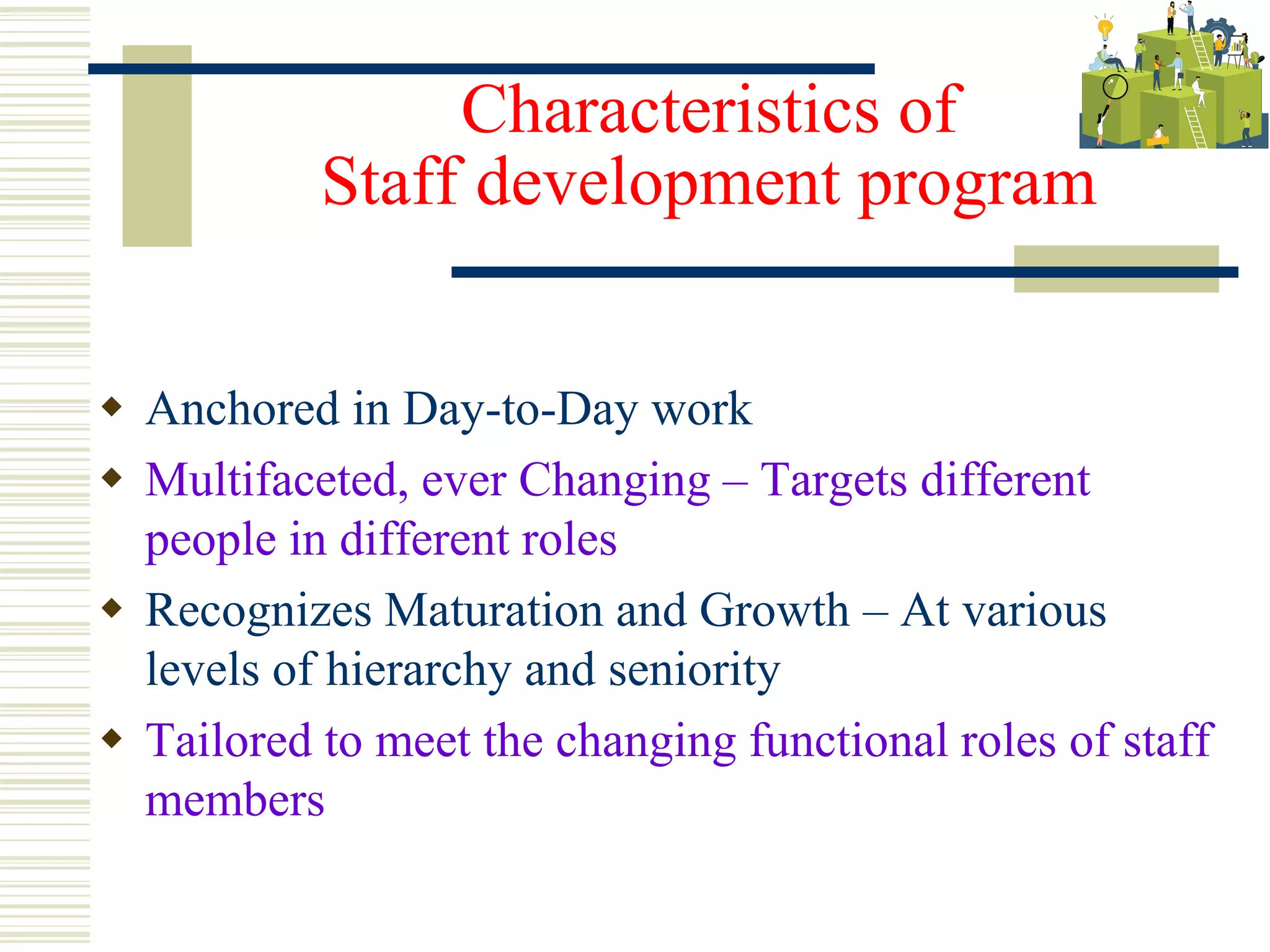Staff development involves processes that help organizations improve employees' skills and performance. It aims to accomplish institutional goals and support personal and professional growth. Some key aspects of staff development programs include assessing training needs, developing objectives, providing various types of training like induction, job orientation, in-service education and continuing education. While staff development benefits both employees and organizations, there are also some potential difficulties like lack of time, resources or buy-in that need to be addressed for programs to be effective.




























